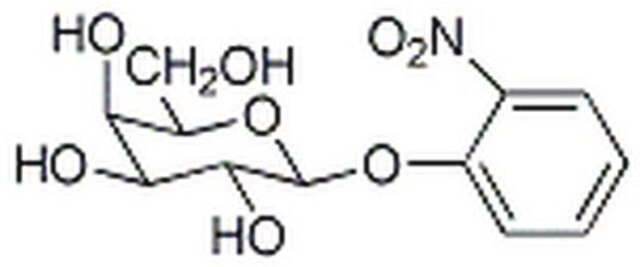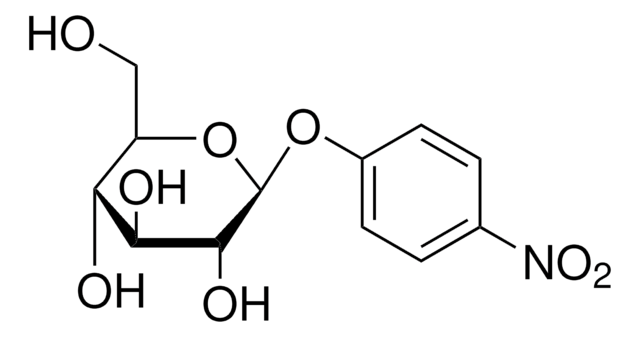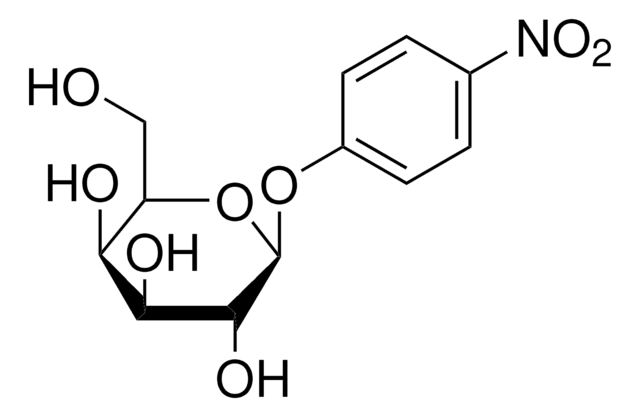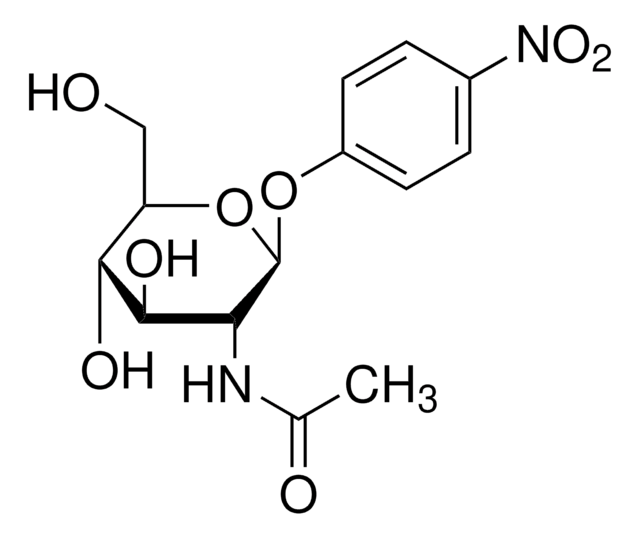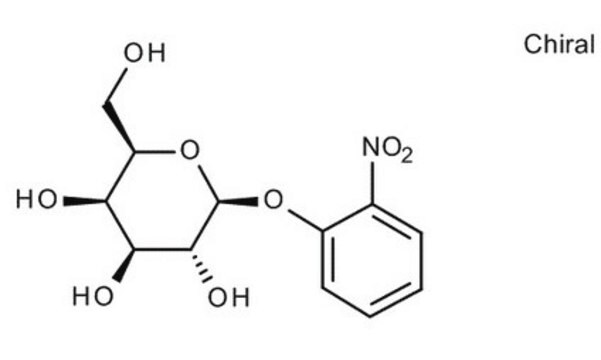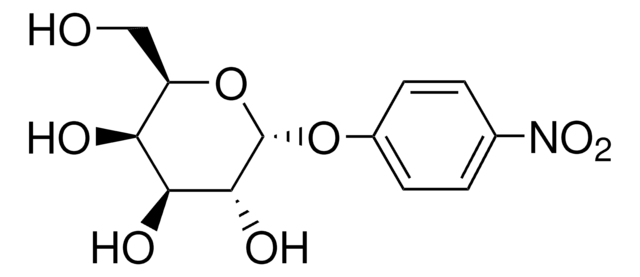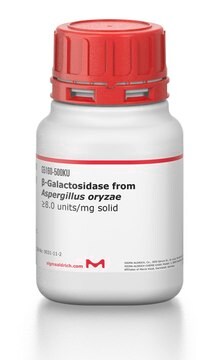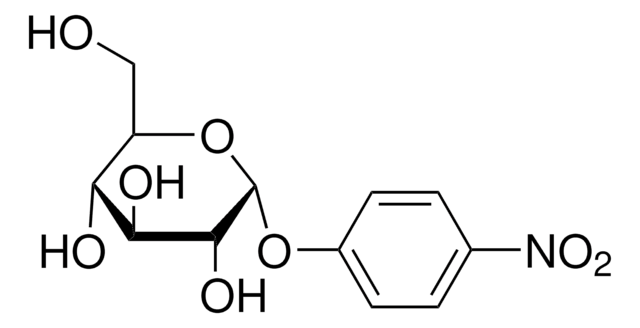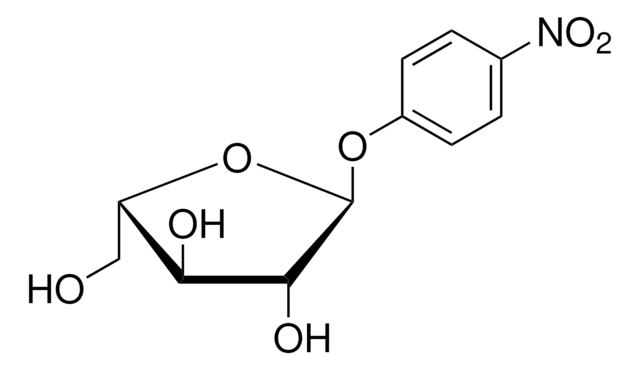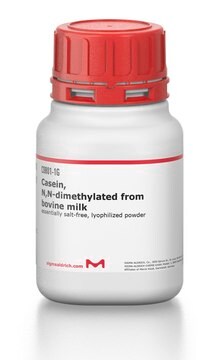N8016
2-Nitrophenyl β-D-glucopyranoside
≥99% (TLC), powder
Synonym(s):
2-Nitrophenyl-beta-D-glucopyranoside, o-NPG
About This Item
Recommended Products
Product Name
2-Nitrophenyl β-D-glucopyranoside, powder
Assay
≥99% (TLC)
Quality Level
form
powder
solubility
water: 50 mg/mL
storage temp.
−20°C
SMILES string
OC[C@H]1O[C@@H](Oc2ccccc2[N+]([O-])=O)[C@H](O)[C@@H](O)[C@@H]1O
InChI
1S/C12H15NO8/c14-5-8-9(15)10(16)11(17)12(21-8)20-7-4-2-1-3-6(7)13(18)19/h1-4,8-12,14-17H,5H2/t8-,9-,10+,11-,12-/m1/s1
InChI key
KUWPCJHYPSUOFW-RMPHRYRLSA-N
Looking for similar products? Visit Product Comparison Guide
Application
Biochem/physiol Actions
Storage Class Code
11 - Combustible Solids
WGK
WGK 3
Flash Point(F)
Not applicable
Flash Point(C)
Not applicable
Personal Protective Equipment
Choose from one of the most recent versions:
Already Own This Product?
Find documentation for the products that you have recently purchased in the Document Library.
Customers Also Viewed
Articles
probiotics-and-human
Our team of scientists has experience in all areas of research including Life Science, Material Science, Chemical Synthesis, Chromatography, Analytical and many others.
Contact Technical Service
